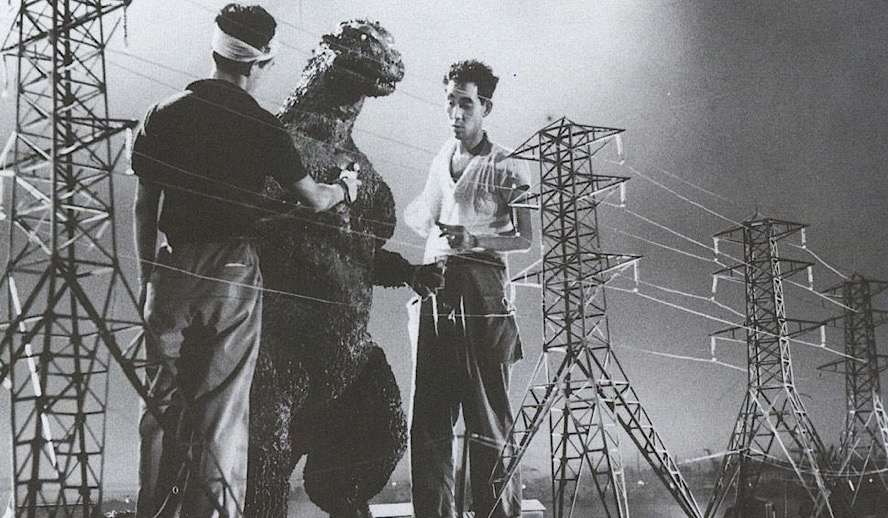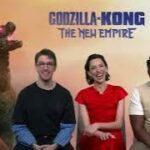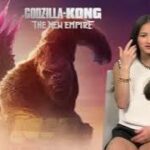Table of Contents

Video Version of this Article
Photo/Video: ‘Godzilla’/’Gojira’/Hollywood Insider YouTube Channel
With the official existence of things like Dark Horse’s 1993 one-shot comic ‘Godzilla vs. Barkley’, based on the 1992 Nike commercial in which NBA star Charles Barkley dunks on Godzilla in downtown Tokyo, it’s admittedly hard to take the character seriously–in fact, few took it seriously from the very start.
Originally conceptualized by a Toho producer who wanted to capitalize on the success of ‘The Beast from 20,000 Fathoms’ and ‘King Kong’ (whose 1952 re-release was so successful that the film was named Time magazine’s “Movie of the Year”), several directors would pass on the original 1954 ‘Godzilla’ because they felt the idea was stupid–Ishirō Honda, who had served in the Japanese military during World War II, took it seriously.
Related article: ‘Godzilla vs Kong’ Review: Delivers Exactly What You Would Expect and Hope for
Related article: The Complete List of 2021 Oscar Nominations – Celebrations, Surprises & Snubs | The Show Must Go On
Audiences today are familiar with the slew of kid-friendly, B-movie ‘Godzilla’ flicks in which a guy in a stiff rubber suit topples a miniature pagoda and grapples with another guy in a stiff rubber suit, but the original ‘Godzilla’ was different.
1954: The Original ‘Godzilla’, Son of Fat Man and Little Boy
It begins calmly, with a scene of crew members relaxing aboard a Japanese fishing vessel. We hear nothing but the rustic melody of one sailor’s harmonica, accompanied by another’s guitar–the rest, strewn about carelessly on the deck, lounge, and play games.
Abruptly, the music and tranquility are interrupted by an explosion. Perplexed by a light that emanates from the sea, the resting sailors come alive and flock to the port side bulwark–with a blinding flash, the ship is sunk.
Compare that to Matakichi Oishi’s first-hand account of the Lucky Dragon 5 incident, in which a Japanese fishing boat was contaminated by nuclear fallout from a U.S. nuclear test on March 1, 1954: “A yellow flash poured through the porthole. Wondering what had happened, I jumped up from the bunk near the door, ran out on deck and was astonished. Bridge, sky and sea burst into view, painted in flaming sunset colors…”
Subscribe to Hollywood Insider’s YouTube Channel, by clicking here.
At first, we don’t see the monster–instead, like ‘Jaws’, we follow the scrambling survivors who attempt to make sense of it. When we see it, there’s nothing campy about its destructive power. What immediately set it apart from predecessors like King Kong and the dinosaur from ‘The Beast from 20,000 Fathoms’ was that bullets would have no effect–this was not a monster that could be “defeated.”
More than that, it takes on a mournful, documentary tone as we witness the aftermath of the attacks–wounded civilians line the halls of overcrowded hospitals and children look upon their deceased parents. In one shot, a woman clutches her three young children as the city burns around her. “We’re going to join Daddy,” she wails, “We’ll be where Daddy is soon!”
In this way, Godzilla famously represented nuclear holocaust–director Honda would say that he “took the characteristics of an atomic bomb and applied them to Godzilla,” modeling its attacks on Tokyo after the bombings of Hiroshima and Nagasaki (which had occurred only nine years prior).
Related article: April Movies Release Schedule: The Most Accurate List of Every Movie Coming Out in April – Live Updates
The usage of the rubber suit (later known as “suitmation”), lampooned in later times for its unrealistic corniness, also debuts here–special effects director Eiji Tsuburaya originally wanted to use stop-motion (like ‘King Kong’ and ‘The Beast from 20,000 Fathoms’), but realized that it would take “seven years” to complete with Toho’s existing resources.
Especially for its time, the original rubber suit looks great. Because much of the film takes place at night, in addition to the frequent usage of close-ups and low camera angles, Honda’s Godzilla is sufficiently menacing–still not convincing to modern audiences, but artfully executed. Contrast that with B-movie sequels in which wide shots, flatly lit, fully reveal the rubber costume’s absurdity and stiffness.
Related article: The Power of Positivity: Ikorodu Bois + Chris Hemsworth + Russo Brothers + Sam Hargrave
Limited Time Offer – FREE Subscription to Hollywood Insider
Universal Horror and Kaiju
Despite selling approximately 9.6 million tickets, ‘Godzilla’, which had been predicted by skeptics would flop, received mixed to negative critical reception–nevertheless, it spawned a new, distinctly Japanese genre of monster films now referred to as kaiju cinema.
To capitalize on its success and momentum, a sequel was quickly produced and released the following year, without Honda as director–’Godzilla Raids Again’. Though underwhelming, it’s notable for introducing Anguirus, an opposing kaiju for Godzilla to do battle with–this concept, reminiscent of the Universal “Monster Rallies”, would become the template for ‘Godzilla’ movies to come.
Speaking of Universal monsters, you don’t tend to associate Frankenstein’s monster with Godzilla despite the fact that they have three key features in common–they’re both classic movie monsters, they’re both lamentations of scientific hubris, and they both belonged to shared cinematic universes long before the Avengers or the MCU even existed.
Universal Pictures would capitalize on the success of their 1930s horror films like ‘Dracula’, ‘Frankenstein’, and ‘The Mummy’ with crossover flicks (“Monster Rallies”), starting in 1943 with ‘Frankenstein Meets the Wolf Man’–this would also become a staple of the kaiju subgenre.
Related article: Hollywood Insider’s CEO Pritan Ambroase: “The Importance of Venice Film Festival as the Protector of Cinema”
Related article: The Masters of Cinema Archives: Hollywood Insider Pays Tribute to ‘La Vie En Rose’, Exclusive Interview with Director Olivier Dahan
1962: ’King Kong vs. Godzilla’
Eventually, ‘King Kong’ animator Willis O’Brien would pitch a proposed treatment for a new feature, ‘King Kong Meets Frankenstein’–deemed too expensive to produce with stop-motion animation, it was eventually picked up by Toho, who replaced Frankenstein’s monster with Godzilla, the fact that Kong draws power from electricity in the finished ‘King Kong vs. Godzilla’ hints at this lost development). Frankenstein’s monster would later return as a bonafide kaiju in Toho’s 1965 ‘Frankenstein Conquers the World’, and Kong would later appear in Toho’s 1967 ‘King Kong Escapes’.
Bear in mind that at the time, ‘Godzilla’ was far from the franchise that it is today–it had been seven years since the original dilogy and King Kong, particularly popular in Japan, was considered the bigger box office draw. Godzilla himself had also yet to be portrayed as an antihero or protagonist, as he would often later be, and so King Kong received first billing.
Released in Japan on August 11, 1962, ‘King Kong vs. Godzilla’ holds the record for the most attended ‘Godzilla’ film in Japan to date, selling 11.2 million tickets during its initial theatrical run. Ishirō Honda would return to direct and, in stark contrast to the originals’ single-minded nuclear overtones, wanted ‘King Kong vs. Godzilla’ to be a satire of Japan’s television industry–as various monsters awaken and begin to do battle, TV companies use the opportunity to gain the upper hand in a never-ending ratings war.
Related article: A Tribute to Steven Spielberg: The Father of the American Blockbuster
Related article: Record Breaker: Anime ‘Demon Slayer’ Beats ‘Spirited Away’ as The Biggest Japanese Box-Office Ever
1954-1975: The Shōwa Era–Establishing the Shared Universe
The success of ‘King Kong vs. Godzilla’ prompted Toho to begin producing ‘Godzilla’ films regularly, almost annually, until 1975–named after the emperor known posthumously as Shōwa (in life, Hirohito), the Shōwa era encompasses all ‘Godzilla’ films beginning with the 1954 original and ending with ‘Terror of Mechagodzilla’ in 1975, after which the series would take a nine-year hiatus.
All of Godzilla’s most iconic recurring adversaries (and occasional allies) would be established in the films of this era, including Mothra, Ghidorah, Rodan, Gigan, and Mechagodzilla. Of note is that Mothra and Rodan had actually debuted in films of their own, also produced by Toho, establishing an informal “kaiju cinematic universe” that echoed that of Universal horror. Godzilla also began to take on more of an antihero role, playfully defending the earth from cosmic foes.
‘Godzilla Raids Again’ had introduced the concept of Godzilla fighting another kaiju, but it was really ‘King Kong vs. Godzilla’ that set the tone for the Shōwa series. Aside from establishing the ‘_____ vs. _____’ title template, it was specifically oriented toward children, moving away from the original films’ serious tones (best exemplified by Minilla, Godzilla’s son, and the Scrappy-Doo of the franchise).
Budgets got tighter, effects got lazier, and Godzilla began engaging in outright slapstick with his supposed adversaries. These are the campiest of the ‘Godzilla’ films, exactly what you imagine when you think of the cheap rubber suit, but they’re fun to watch. Standout moments include Godzilla jumping for joy in ‘Invasion of Astro-Monster’ and Godzilla’s dropkick in ‘Godzilla vs. Megalon’.
Related article: The 10 Most Impactful and Best Asian Movies to Binge Right Now
Related article: Everything We Know About Netflix’s Upcoming ‘Cowboy Bebop’ Show
It’s worth quickly noting here that the Shōwa ‘Godzilla’ films were all released theatrically in the United States, horribly dubbed, and re-edited for American audiences. The 1954 original, for instance, was renamed ‘Godzilla, King of the Monsters!’ and starred Raymond Burr as Steve Martin, an American reporter who narrates the story. , while the American localization of ‘Godzilla Raids Again’ was called ‘Gigantis the Fire Monster’ in an attempt to create an entirely different film around the original’s existing footage.
1984-1995: The Heisei Era
For the series’ 30th anniversary, Godzilla would return in the aptly named ‘The Return of Godzilla’, released in 1984 and the last entry until 2000 to be released theatrically in the United States.
Ignoring everything that happened in the Shōwa series, ‘The Return of Godzilla’ served as a reboot and direct sequel to the 1954 original–it returned to a more serious tone with nuclear contemplations but was only moderately received, failing to generate as much revenue as Toho had hoped.
Whereas the original had resonated with fresh memories of nukes and war, audiences of the ‘80s were already beginning to forget. Deciding instead to refocus on the “monster vs. monster” aspect, Toho would return in 1989 with ‘Godzilla vs. Biollante’, often regarded today as one of the franchise’s underrated gems–still, box office performance remained only adequate.
Related article: Guns, Muscles, and Kung Fu – The 1980s and the Birth of the “Action Movie” and “Action Hero”
Related article: 10 Best Martial Arts Movies: An Intro and In-Depth Look at the Genre
None of the Heisei films would come close to matching the commercial performance of ‘King Kong vs. Godzilla’, but they’re all rather creative and unique. ‘Godzilla vs. King Ghidorah’, for instance, features a time travel plot that’s actually kind of interesting, and ‘Godzilla vs. Mothra’ and ‘Godzilla vs. Mechagodzilla II’, while not as iconic as their Shōwa counterparts, are solid flicks and worth a watch.
The Heisei era would come to an end in 1995 with ‘Godzilla vs. Destoroyah’, originally announced to be the series’ final installment. Heavily promoted by Toho as featuring the death of Godzilla, the film actually lived up to its promise with a simple, but awesome premise–Godzilla’s heart is really a nuclear reactor, and it’s on the verge of a meltdown.
Of course, Godzilla wouldn’t truly die–but before Toho brought the character back, Hollywood did.
TriStar Godzilla 1998
TriStar’s 1998 ‘Godzilla’, starring Matthew Broderick, is an infamous misstep that would stall the creature’s Hollywood debut.
When asked if he was a ‘Godzilla’ fan, director and co-writer Roland Emmerich said, “They were just the weekend matinees you saw as a kid, like Hercules films and the really bad Italian westerns. You’d go with all your friends and just laugh.”
Regardless of any other problems that one might have had with the film, fans were appalled above all by the TriStar’s Godzilla’s complete lack of actual Godzilla characteristics, from its basic size, appearance, and behavior to the fact that it’s ultimately killed by a few basic missiles–one of the character’s defining traits is that the army can’t scratch him.
Related article: The Early Invention of Film and Motion Pictures: An Alchemical Breakthrough | History of Movies
Related article: Cowboys and Samurai – A Study Of Genre | An In-Depth Analysis
Of the film’s multitude of problems, it can simply be said that in pursuit of a more realistic portrayal, ostensibly to better serve Western audiences, the TriStar ‘Godzilla’ stripped its titular creature of any characteristic feature. Toho would even go so far as to officially rename TriStar’s creature to “Zilla,” including it in a later film just so the real Godzilla could kick its ass.
Millennium Era
Under high pressure from fans, Toho would revive Godzilla in 1999 with ‘Godzilla 2000: Millennium’–like ‘The Return of Godzilla’, it served as a reboot that ignored everything but the 1954 original. It’s a great, cheesy Godzilla spectacle, met with lukewarm reception at the time.
The next three films of the Millennium era would also be standalone reboots, acting as a sort of ‘Godzilla’ anthology series. ‘Godzilla: Tokyo S.O.S.’ would break the trend and serve as a direct sequel to ‘Godzilla Against Mechagodzilla’, forming a trilogy with the final Millennium installment–’Godzilla: Final Wars’, released on ‘Godzilla’s’ 50th anniversary in 2004. Filled to the brim with a familiar kaiju adversary, it’s worth a watch for the spectacle alone.
It should also quickly be noted that Toho was still producing ‘Godzilla’ films with suitmation (though CGI had begun to be used in the Heisei era for various special effects, including Godzilla’s iconic atomic breath). TriStar’s ‘Godzilla’ was the first to fully render its monster with CGI, and the films of the Millennium era would be the last to use suitmation.
Following ‘Final Wars’, Toho declared that they would not produce a new ‘Godzilla’ movie for ten years, demolishing the water stage on its lot used in previous films to shoot water scenes–presumably as a testament to their sincerity.
Related article: In Honor of Chloe Zhao’s Historic Win at Golden Globes: Here Are 10 Amazing International Female Directors
Related article: How Hollywood Has Perpetuated Anti-Asian Racism, The Complicated History
Legendary and the Reiwa Era–Godzilla in the Modern Age
Like clockwork, he returned in 2014–’Godzilla’, this time produced by Legendary Pictures and directed by Gareth Edwards, a newcomer who’d debuted directorially only four years earlier with ‘Monsters’ (and who’d go on to direct ‘Rogue One: A Star Wars Story’). Starring ‘Avengers: Age of Ultron’ co-stars Aaron Taylor-Johnson and Elizabeth Olsen alongside Bryan Cranston and Ken Watanabe, Legendary’s ‘Godzilla’ proved not only to be commercially successful, but to please critics, fans, and Japanese audiences alike.
For the first time, this was a reboot that didn’t act like a sequel to the original, instead of creating its own mythos (they do, however, pay homage by explaining that the 1954 nuclear tests at Bikini Atoll were actually attempts to destroy Godzilla with nukes).
Its success would motivate Toho to reboot their own franchise, and in 2016 they would release ‘Shin Godzilla’ (“New Godzilla”), also a fresh reboot with no relation to the original. Critically acclaimed by Japanese critics, it more than tripled the first weekend’s gross of ‘Final Wars’, ultimately becoming the highest-grossing live-action Japanese film of 2016.
Comprising the rest of the ongoing Reiwa era is the Netflix anime trilogy which follows a group of human refugees who attempt to recolonize Earth nearly 20,000 years after they were driven out by Godzilla–of course, he’s still there, bigger and badder than ever before.
Related article: The Power of Perspective in ‘The Handmaiden’, A Masterclass in Storytelling Technique
Related article: War Movies Not From USA: A Perspective Outside of Hollywood
The Legendary MonsterVerse
Not only did the success of Legendary’s ‘Godzilla’ inspire ‘Shin Godzilla’, it also formed the launchpad for Legendary’s new shared cinematic universe, officially dubbed the MonsterVerse, which includes ‘Godzilla’, ‘Kong: Skull Island’, ‘Godzilla: King of the Monsters’, and ‘Godzilla vs. Kong’–this time, Godzilla gets top billing.
In terms of the franchise’s future, Toho’s Chief Godzilla Officer Keiji Ota stated, “After 2021, we’re thinking of a potential strategy that [releases] Godzilla movies interrupted at a rate of every two years, although there is a preference for a yearly pace as well. The future of the series and its forwarding developments are very conscious of the method of “shared universe”. Godzilla, Mothra, King Ghidorah, etc. could all share a single world view much like a Marvel movie where Iron Man and the Hulk can crossover with each other. It is said that each movie can be a possible film production where any one of them could lead a film of their own as the titular character.”
Of course, without taking cues from the MCU, Toho had already achieved exactly that throughout the ‘60s and ‘70s with their kaiju universe–what’s ultimately concerning, however, is the fact that nobody has successfully replicated the MCU’s success. Aside from the obvious comparison to the DCEU, look at Universal’s Dark Universe, the attempted franchise and revival of classic monsters that died with its first and only film, ‘The Mummy’.
Related article: A Tribute to Studio Ghibli: A Masterclass of Storytelling and Cinema
Related article: ‘Nausicaa of the Valley of the Wind’: A Haunting Sci-Fi Allegory that Established Miyazaki as an Environmentalist Icon
In regards to his philosophy behind 2014’s ‘Godzilla’, director Gareth Edwards would say, “I want a story that begins and ends, and you leave on a high. That’s all we cared about when we were making this; just this film. If this film is good, the others can come, but let’s just pay attention to this and not get sidetracked by other things.”
It stands out in contrast to a producing philosophy that has plagued would-be MCU imitators (apparent in films like ‘Justice League’), focusing on establishing a shared universe, characters, and future plotlines more than on the film itself–for Edwards, the result of his focused dedication was a film that sparked the current era of Godzilla.
By Daniel Choi
Click here to read Hollywood Insider’s CEO Pritan Ambroase’s love letter to Black Lives Matter, in which he tackles more than just police reform, press freedom and more – click here.
An excerpt from the love letter: Hollywood Insider’s CEO/editor-in-chief Pritan Ambroase affirms, “Hollywood Insider fully supports the much-needed Black Lives Matter movement. We are actively, physically and digitally a part of this global movement. We will continue reporting on this major issue of police brutality and legal murders of Black people to hold the system accountable. We will continue reporting on this major issue with kindness and respect to all Black people, as each and every one of them are seen and heard. Just a reminder, that the Black Lives Matter movement is about more than just police brutality and extends into banking, housing, education, medical, infrastructure, etc. We have the space and time for all your stories. We believe in peaceful/non-violent protests and I would like to request the rest of media to focus on 95% of the protests that are peaceful and working effectively with positive changes happening daily. Media has a responsibility to better the world and Hollywood Insider will continue to do so.”
More Interesting Stories From Hollywood Insider
– Want GUARANTEED SUCCESS? Remove these ten words from your vocabulary| Transform your life INSTANTLY
– Compilation: All James Bond 007 Opening Sequences From 1962 Sean Connery to Daniel Craig
– Do you know the hidden messages in ‘Call Me By Your Name’? Find out behind the scenes facts in the full commentary and In-depth analysis of the cinematic masterpiece
– A Tribute To The Academy Awards: All Best Actor/Actress Speeches From The Beginning Of Oscars 1929-2019 | From Rami Malek, Leonardo DiCaprio To Denzel Washington, Halle Berry & Beyond | From Olivia Colman, Meryl Streep To Bette Davis & Beyond
– In the 32nd Year Of His Career, Keanu Reeves’ Face Continues To Reign After Launching Movies Earning Over $4.3 Billion In Total – “John Wick”, “Toy Story 4”, “Matrix”, And Many More

Daniel Choi is a writer who’s currently pursuing a BA in Film & Television from New York University. With a background in amateur film production, Daniel is fascinated by how artists’ cultural backgrounds inform their work, subconsciously or not, and how that work is then perceived by different audiences across time and space. He joined Hollywood Insider to promote its mission statement of substantive entertainment journalism, and hopes to enrich readers’ understandings of cinema through insightful analysis.








